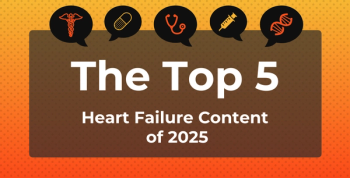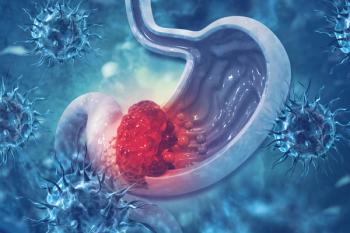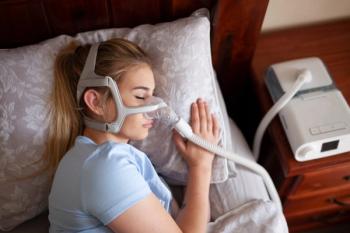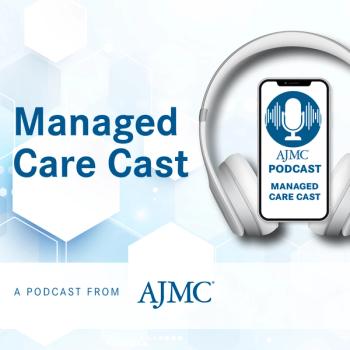
Stress Cardiac MRI May Catch Missed Angina Diagnoses
Key Takeaways
- Stress CMR significantly enhances diagnostic accuracy for chest pain without obstructive coronary artery disease, identifying microvascular angina often missed in standard angiography.
- The CorCMR trial demonstrated improved symptom relief and quality of life with MRI-guided care, particularly benefiting women with microvascular angina.
New research suggests stress cardiac MRI could help diagnose angina and improve quality of life for patients whose arteries appear clear on angiography.
Chest pain remains one of the most common causes of emergency department visits, yet half of patients who undergo coronary angiography show no blocked arteries.1 In such cases, new evidence presented at the
The CorCMR trial (
Functional Testing Uncovers Hidden Angina
The CorCMR trial investigated whether measuring myocardial blood flow through stress CMR could identify small vessel abnormalities and improve management in these patients. The randomized, double-blind study enrolled 250 adults who had chest pain but no evidence of obstructive coronary artery disease on angiography. The mean age was 63 years, and 51% of participants were women. Participants underwent a stress CMR scan to measure myocardial blood flow and were randomly assigned to receive either MRI-guided management in the treatment arm or angiography-guided management in the control arm.
“Of note, 1 in 5 of these patients had previously undergone an invasive coronary angiogram,” Colin Berry, MD, PhD, professor of cardiology and imaging at the University of Glasgow, explained at AHA 2025. “Surprisingly, only 7.6% of the patients had a functional test during their angiogram.”
When the MRI information was taken into account by blood flow, more than half of participants (53%) had a reclassification of diagnosis, meeting the study’s primary end point. These patients received a new diagnosis of microvascular angina—a condition often overlooked in women—while the other half was found to have noncardiac chest pain.
“Therefore, microvascular angina is commonly not diagnosed during standard coronary angiography,” Berry said. “These results, whilst they apply equally by sex, are particularly important to heart disease in women, because this problem disproportionately affects women.”
Quality of Life, Angina Scores Improved With CMR-Guided Care
At 12 months, participants in the MRI-guided group reported an average 21-point higher score on the Seattle Angina Questionnaire compared with those receiving standard angiography-based care (70.9 vs 52.1; P < .001). The intervention group also showed higher EuroQoL-5D-5L scores, reflecting improved overall well-being.
These improvements were accompanied by changes in medical management: at 1 year, participants receiving MRI-guided care were more likely to be prescribed anti-anginal medications (84% vs 64%), aspirin (77% vs 56%), and statins (82% vs 62%) than those receiving angiography-guided management. No adverse events or deaths were reported during the trial, which achieved 100% follow-up.
“In this population, symptoms and quality of life are most important, and that's what we have evaluated through validated questionnaires,” Berry said.
Answering 2 Questions at Once
Commenting on the findings, Robert A. Harrington, MD, FAHA, senior vice president and dean for academic medicine at Columbia University Irving Medical Center, noted the study’s practical impact and efficient design. He pointed out the lack of high-quality evidence for what to do with patients who have unexplained chest pain.
“It's a group of patients [who are] often ignored,” Harrington said. “It's a group of patients [who] are often told they don't have anything wrong with their heart, and that's because the lumen on the angiography looks okay, and so it's a group of patients [who] disproportionately feel not listened to.”
Trialists included patients’ voices when designing the study, which was able to answer questions about both diagnostics and treatment in a single trial. Harrington added that blinding the study was an important part of its design.
“While the evidence base will increase, we now know that this is a strategy that we can embark upon for some of our patients who have ongoing chest pain and who have nonobstructive coronary disease on their cardiac catheterization,” Harrington said. “Proceeding on to an MRI with adenosine stress adds an important piece of information—we can give people a diagnosis and we know how to treat them better.”
References
- Mark DG, Huang J, Ballard DW, et al. Emergency department referral of patients with chest pain for noninvasive cardiac testing and 2-year clinical outcomes. Circ Cardiovasc Qual Outcomes. 2024;17(6):e010457. doi:10.1161/CIRCOUTCOMES.123.010457
- Berry C. Non-invasive endotyping in patients with angina and no obstructive coronary artery disease: a randomized, controlled trial. Presented at: AHA 2025 Scientific Sessions; November 7-10, 2025; New Orleans, LA.
Newsletter
Stay ahead of policy, cost, and value—subscribe to AJMC for expert insights at the intersection of clinical care and health economics.







































